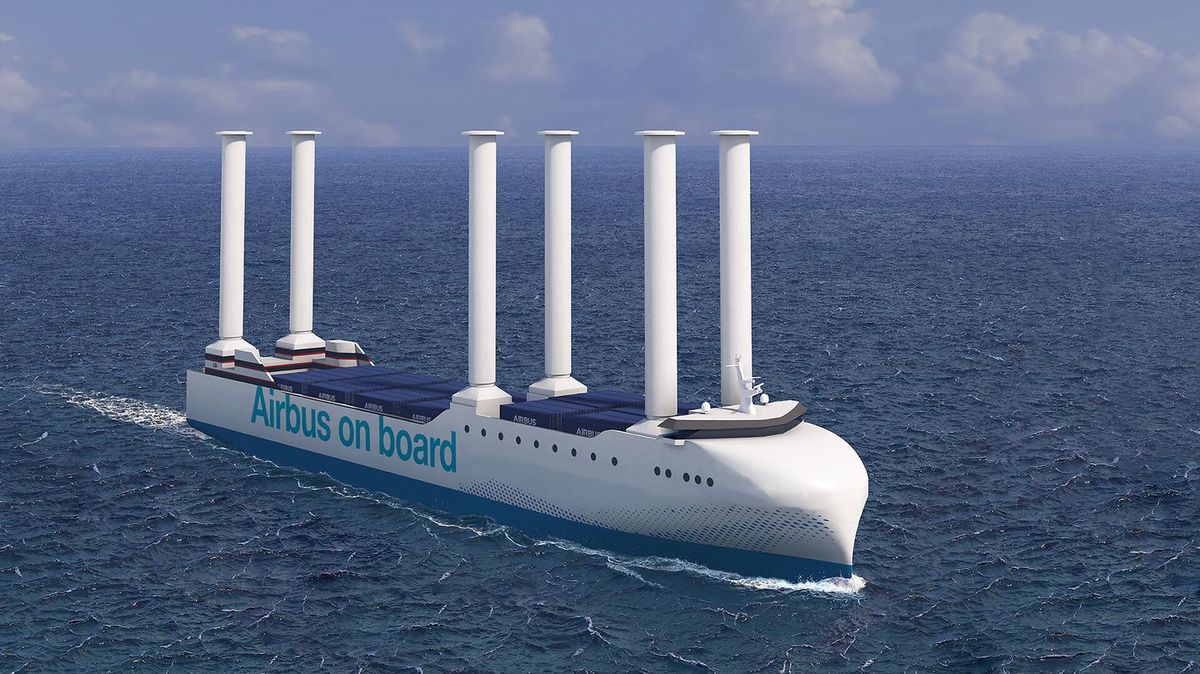Wind-assisted propulsion for Louis Dreyfus Armateurs' three new RoRo vessels
The French shipping firm will build three low-emission roll-on/roll-off (RoRo) ships, equipped with Flettner rotors — a wind-assisted propulsion system (WAPS).
 PHOTO: Airbus expects its fleet will generate 50% less CO2 emissions by 2030 compared than it will this year. Airbus
PHOTO: Airbus expects its fleet will generate 50% less CO2 emissions by 2030 compared than it will this year. Airbus
These vessels are designed to carry aircraft assembly units between Europe and the US.
These Flettner rotors are expected to bring down Airbus' fleet's average transatlantic CO2 emissions from 68,000 mt/year to 33,000 mt/year by 2030, according to Louis Dreyfus Armateurs.
The shipowner will start operating these vessels in 2026. The vessels are currently chartered by Airbus.
What to expect
The new vessels will be powered by Flettner rotors and two dual-fuel engines running on marine diesel oil and e-methanol.
Flettner rotors are large, rotating cylinders that harness wind energy to aid propulsion. In this way, these rotors will provide a wind-assisted lift that can help propel a vessel forward.
Additionally, each RoRo ship will have routing software to avoid sea surface drag and maximise their wind-assisted propulsion.
According to the IMO's Global Maritime Energy Efficiency Partnerships project, the fuel reduction potential of a Flettner rotor can vary between 3-15% for main engine, depending on a vessel's size, segment, operation profile and trading areas.
Norway-based classification society DNV affirms that Flettner rotors have delivered fuel savings of 4.5%, with potential of as much as 25% on smaller vessels.
By Manjula Nair
Please get in touch with comments or additional info to news@engine.online





